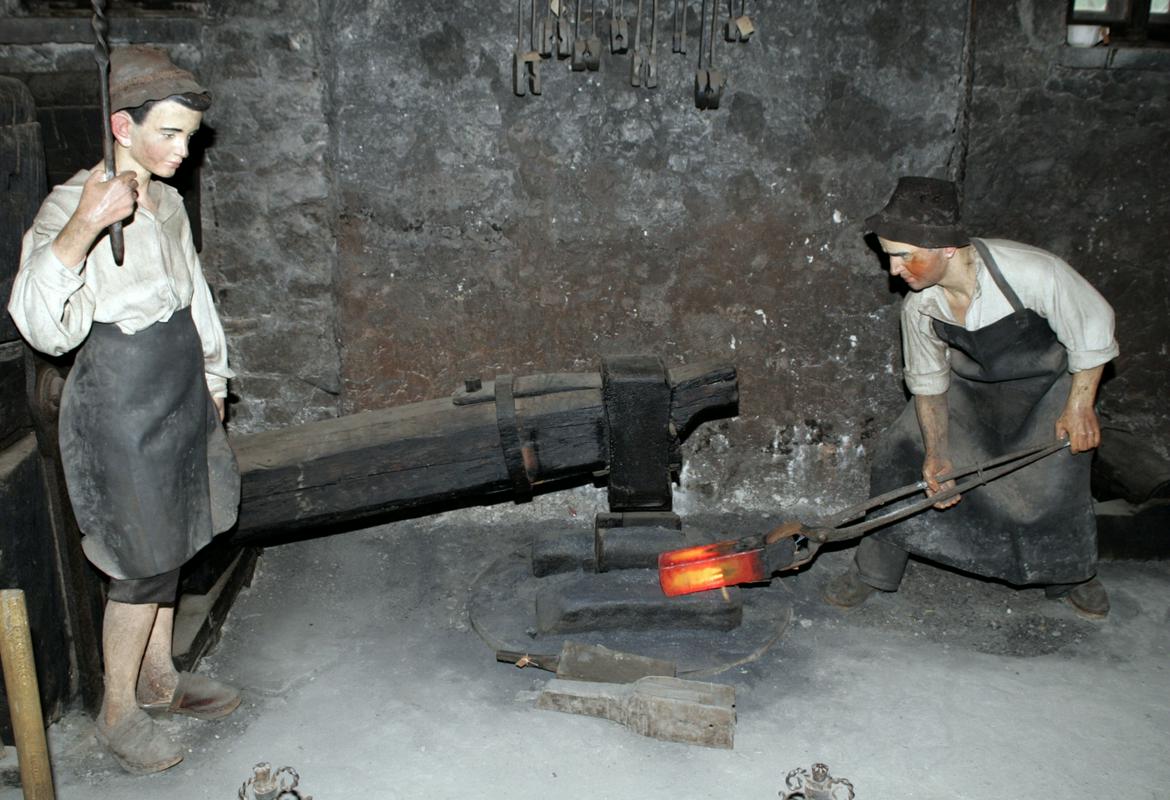
Nestled in an Alpine valley in northern Slovenia, Jesenice seems like an unprepossessing place at first sight, an industrial town with housing complexes built mosly after World War II. A lone preserved smokestack, now next to a shopping mall, serves as a reminder of an industry that put Jesenice on the map.
The first iron foundries in the area appeared in the 14th century. Their location was not a coincidence; there was plenty of iron ore in the surrounding mountains, large quantities of wood that could be used for fuel, and mountain rivers and streams to power the mills.
The number of foundries grew rapidly, especially after members of the Ortenburg family, who owned the land, encouraged large-scale settlement of the area.
A central blast furnace was built in the 16th century, when one of the industrial families of Jesenice also built a mansion next to the ironworks.
Eventually, much of the iron-making industry was consolidated by the famous Zois family of industrialists. Then, in the 19th century, the operations of the ironworks were transferred to a newly established joint-stock company known as the Carniolan Industrial Society, primarily to ensure that the Jesenice ironworks could keep up with the competition. The new company could do what its predecessors couldn’t: it modernized the equipment and created one of the most modern ironworks in Europe. The plant’s scientific advances in iron processing were recognized internationally, and the construction of a new railroad allowed it to supply large parts of Europe with Iron.
The ironworks provided employment to the Upper Sava Valley and often supported entire multi-generational families.
After World War II, the ironworks was nationalized by the Communists. The facilities were also greatly expanded. Because many Slovenians were killed during World War II and many others left the country after the war, the new factory encouraged the influx of new workers, mostly from Bosnia-Herzegovina, who drastically changed the social structure of Jesenice.
By the 1980s, however, many parts of the plant were woefully outdated. Several had not changed much since the 19the century. That decade, a new clean-burning ironworks was built just outside of town. It continues to provide work for hundreds, while the people of Jesenice can finally enjoy much cleaner air. The reddish soot that once gave a rusty appearance to the entire town is gone, and the local authorities are now promoting a new industry: tourism.
The town is ideally situated to become a gateway to the Slovenian Alps. Its 16th century mansion has been turned into a museum, and several old industrial buildings, including the largest blast furnace, have been lovingly restored. They now serve as a reminder of an industry that shaped entire generations in this mountainous part of Slovenia.

































































